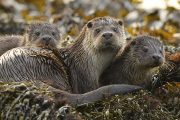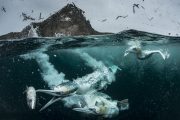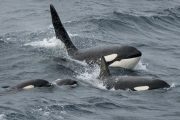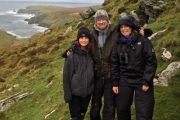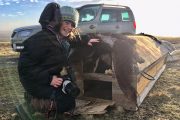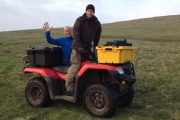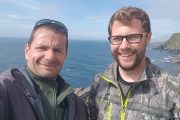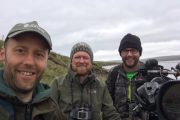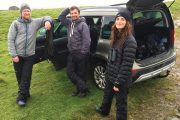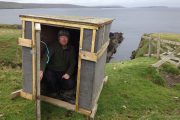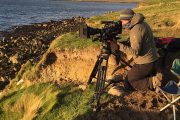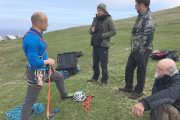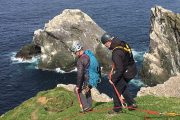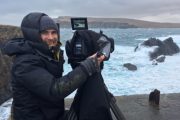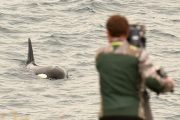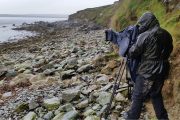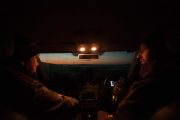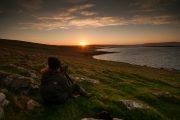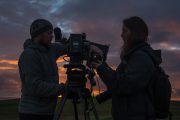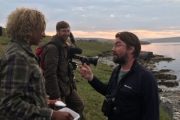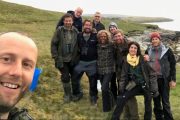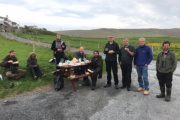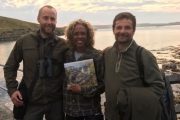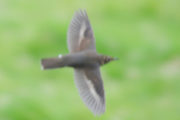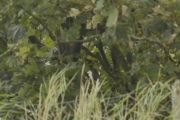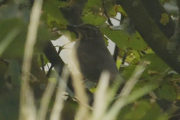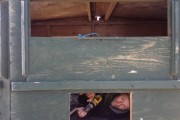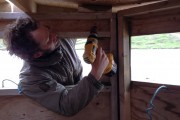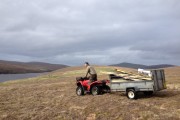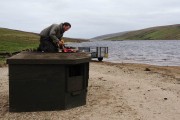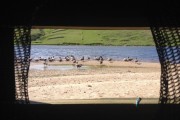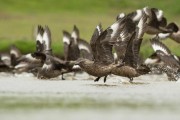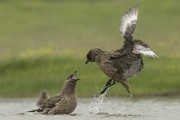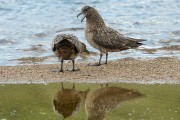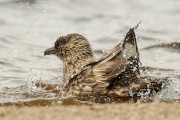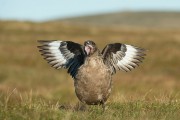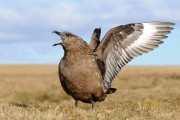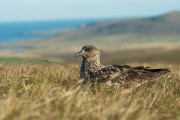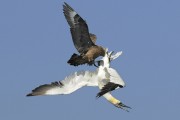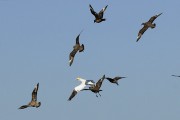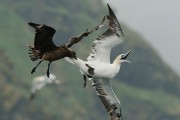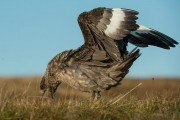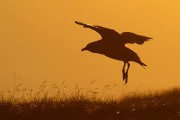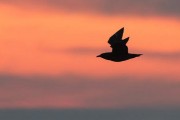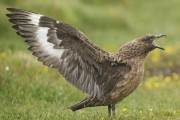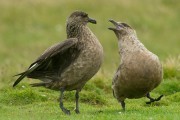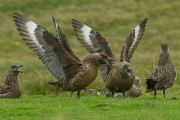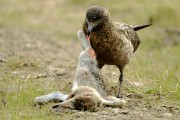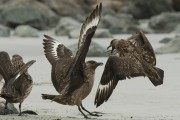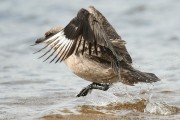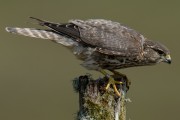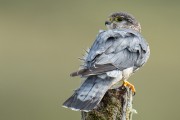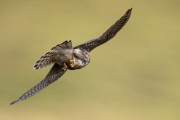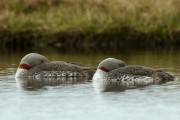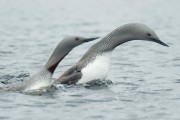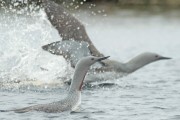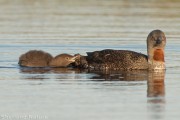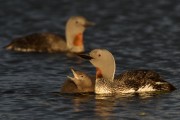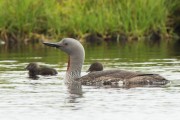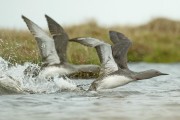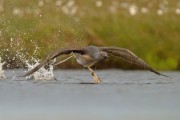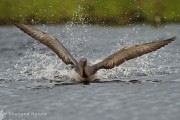Archive for the ‘Brydon’s Shetland Nature Blog’ Category:
Wild Shetland: Scotland’s Viking Frontier – Behind the scenes
Posted by Brydon Thomason on Wednesday 23rd January 2019 | Brydon's Shetland Nature Blog, News, TV Appearances
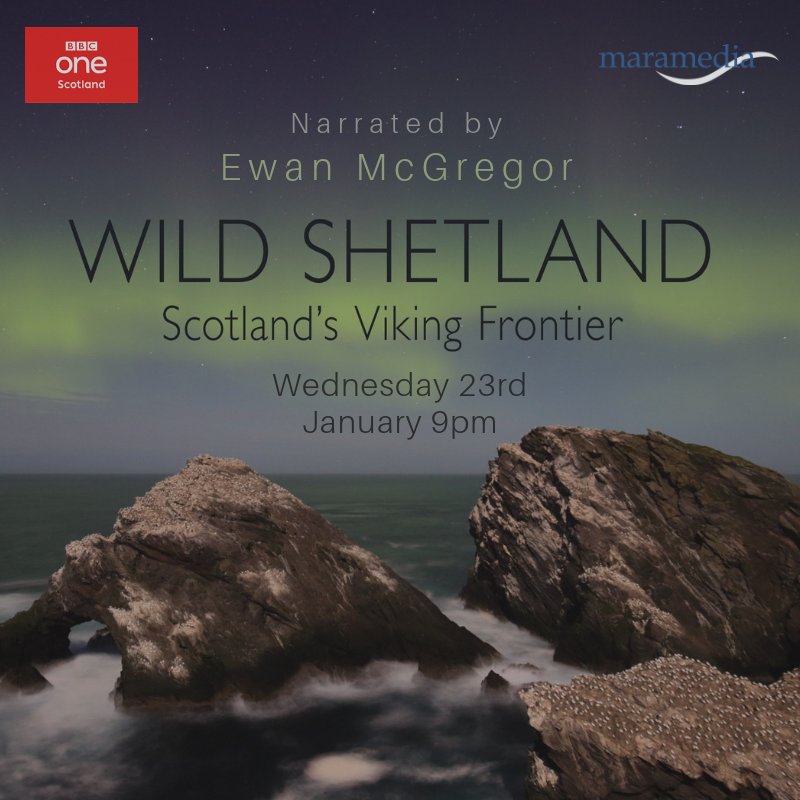
Wild Shetland – Scotland’s Viking Frontier
BBC One Scotland – Wednesday 23rd January 2019, 9pm
For the last 12 years there hasn’t been a season go by that we haven’t worked on, or featured in TV productions about Shetland. We feel truly humbled by this and see it as a privilege which we do with genuine pride for Shetland, our way of life and especially our natural history.
But this one is really special. From the moment we first met with Maramedia producer, Jackie Savery, myself and Richard Shucksmith put our heart and souls in to help make the film be everything Shetlands wildlife deserved it to be! We were already well aware of their impressive portfolio of award winning films such as ‘Highlands – Scotland’s Wild Heart’ and ‘Hebrides – life on the edge’, we knew this would be the real deal.
The team we worked with were fantastic, making our jobs all the more enjoyable. Cameramen such as Raymond Besant, Justin Purefoy and Fergus Gill were not only exceptional behind the lens but true gents and better still, great craic too.
The whole team at Maramedia deserve a mention and high praise, from the researching through to the final edits as do Fraser Purdie for the music and indeed Ewan McGregor for the narration – bringing a touch of Hollywood to the production!
The whole film making process is fascinating and extremely emotive. Everyone gets on the same page and gives it their all. Each of us, with our respective areas of expertise collaborating and coming together with ideas and solutions to get the best out of every shoot.
As well as facilitating and advising on many aspects of the film, our main role was as otter consultants and field guides. This was a dream assignment for us – to work on a family from their first few weeks of venturing out of their natal holt, through to the eventual family separation. We work on otters week in, week out throughout the seasons and especially for projects like these, need to know what they are doing, where and when.
It’s crucial we get the crew in the right place at the right time. But there is a balance between what the team might want; what will look good on screen, what’s possible – but most importantly, making sure the wildlife comes first – that is our primary responsibility.
It has to be said here that the Maramedia team were respectful of this at every stage and we were impressed by this from the outset. Many production companies want to push things, which never works with us but they have a very good and responsible understanding of this.
The standard of wildlife film making has moved on to an astonishing level in recent years through the combination of technology and indeed tenacity. Each new documentary series reaches new heights in how wildlife is filmed and brought to our screens and now, through this fantastic film Shetland will stand out like never before.
Many of the sequences shot are truly unique, never having been filmed in Britain before and I am especially pleased for Richard to have some incredible footage in the film as well as a stunning timelapse done by Rob Brookes. It was also great to have Shetland Seabird Tours involved for the Noss Gannet sequences.
This film is a beautiful, exciting and inspiring celebration of Shetland, its wildlife, cultural heritage and natural beauty. It is the result of many individuals and professionals committing whole heartedly to have made it what it is and we, like everyone involved are extremely proud – we hope it’s as much fun to watch as it was to make!
Permalink
BBC Springwatch back on Shetland – 2018
Posted by Brydon Thomason on Wednesday 30th May 2018 | Brydon's Shetland Nature Blog, News, TV Appearances
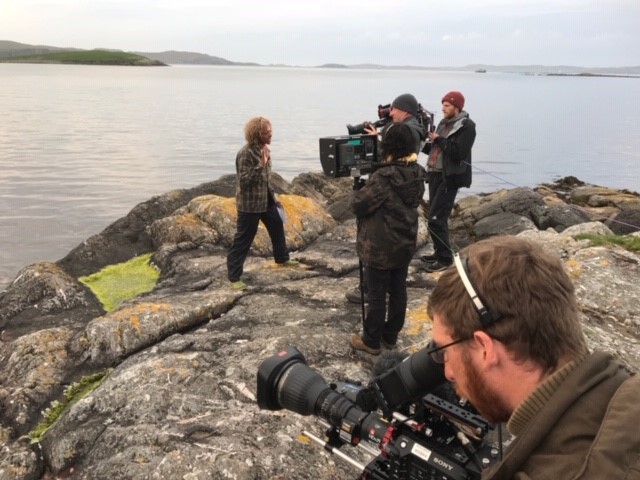
BBC Springwatch were back again for their third time to share or wild secrets with the nation and once again, we were thrilled to be involved.
It was particularly exciting series for us working as otter consultants/guides as Josh Jaggard, on his fourth season working with us here worked as one of their main cameramen. It was pretty cool for myself and Richard Shucksmith to be out with him on that assignment, especially given that’s what each of us do for our clients.
Working together we managed to get some good footage over the few days, perhaps the best of it was Josh’s sequence of a dog and bitch mating! Quite unique behaviour to see in the field let alone film.
The bar was raised when the series producer Stuart Armstrong asked us, “do you think we could get otters on screen for the live show”? A challenge it might certainly be, the tides especially were not ideal but we pulled it off, regardless of how far off in the bay it was!
It was fascinating working on the live show. Intense and exciting with no room for error or the nation knows! But nonetheless, everyone knows their role and what needs done and just gets on with it – it’s what they do!
As always the team and everyone we met were really good to work with, particularly Stuart and the presenter Gillian and Gretta the assistant producer.
I was really surprised to be asked to do a piece to camera about my my love for Birding my local patch, Halligarth right next door to our home. As the most northerly woodland in UK, amidst such a diversity of treeless habitat, annually attracting many exciting migrants it did actually make a nice feature. It turned out to make pretty cool short film and although never a massive fan of onscreen appearances, I was really pleased they pursued the idea – especially as I managed to get the whole family to appear on screen with me, all be it briefly!
Permalink
White-winged Scoter
Posted by Brydon Thomason on Friday 24th November 2017 | Birding in Shetland, Brydon's Shetland Nature Blog
On Wednesday 18th October Dougie Preston found a Ring-necked Duck on Sand Water, near Gutcher on Yell. A first for the island and Shetlands second in a week- this was in itself a worthy discovery. It was whilst photographing it however that his day was about to get even better. With the RND framed up in his viewfinder, an immature/female type Velvet Scoter shot through his field of view as it landed on the loch alongside the small flock of aythya ducks.
Instinctively he fired off a few frames, then almost immediately it started to dive. Barely two minutes later, at approximately 13:20pm the duck took flight, heading north in the direction of Gutcher and the Bluemull Sound area. He was immediately struck by its atypical head shape and bill profile, especially the latter which set alarm bells off as his as his mind’s eye recalled Birding Frontiers articles on White-winged Scoter! A very commendable shout indeed.
After consulting available literature on WWS Dougie posted a photo on the local WhatsApp group at 14:24pm which read; “Comments welcome… Only touched down very briefly on Sand Water Yell early afternoon“.
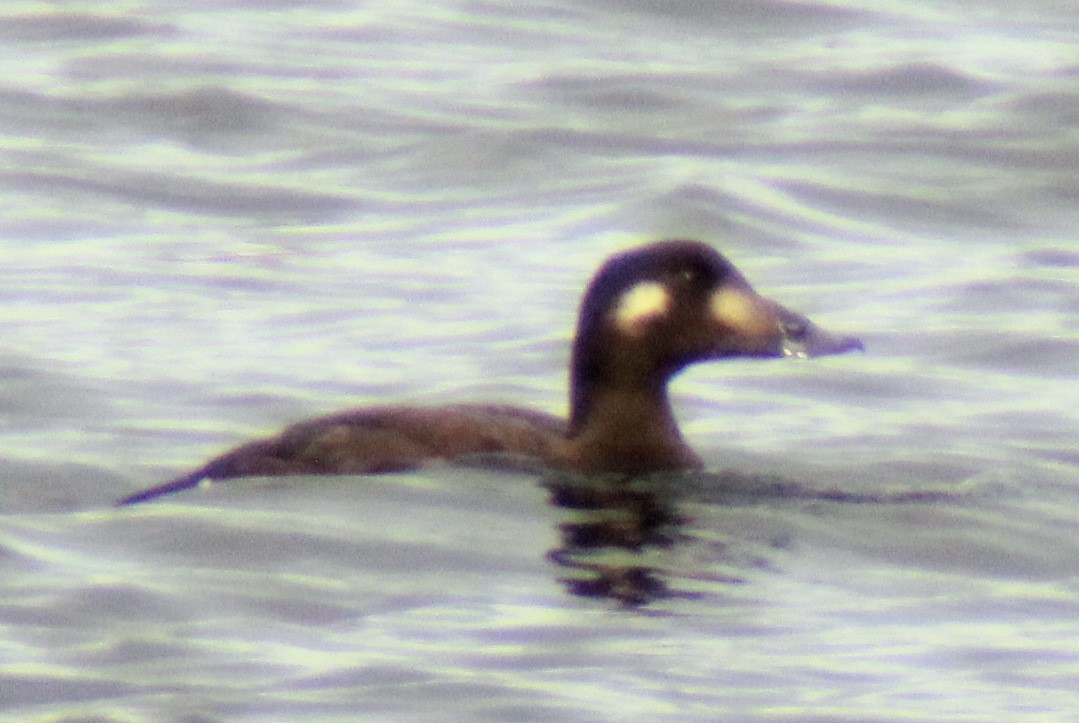
The image that got the ball rolling: White-winged Scoter, Sand Loch, Yell, 18 October 2017 (Dougie Preston).
Prior to this and completely unaware of the goings on, I was birding the Belmont Farm area, (having dropped off tour guests at the ferry) when I found a female/immature type Velvet Scoter at approximately 14:15pm on Loch of Belmont. With ‘bins only’ views and at quite a distance from the farm yard I hadn’t much to go on however was intrigued enough to want it in the scope. Velvet Scoter is a scarce enough bird in Shetland that any rarity savvy birder should always want scope views.
Returning to the car at far side of the farm I drove back through the yard in the hope of getting it in the scope however it and the Long-tailed Ducks it had been loosely associating with had gone. A scan of the ferry terminal and closest loch, Snaravoe drew a blank. It wasn’t until back in signal an hour later in Uyeasound that I picked up Dougie’s WhatsApp messages which had certainly sparked interest to say the least. Paul Harvey had been quick off the mark with positive feedback to Dougie’s post and had also contacted him directly to discuss the bird.
I was only five minutes away birding Uyeasound so hurried back, my heart racing as I thought it must surely be the same bird. It had returned to Loch of Belmont and now with scope views and a few hand held, shaky ‘iphone-scoped’ images I could see enough to see the same ‘Surf Scoter like’ appearance with square head shape and flat crown; raised bill profile and ‘broken nosed’ look.
With no signal I had to race down to the ferry terminal for WiFi to call for back-up from fellow Unst birders. I couldn’t get through to Micky Maher however Mike Pennington had already acted on intuition, knowing that Sand Water was just a few miles away (only 2.5 he later found out!), hoping to relocate the scoter and was literally just a few hundred yards up the road scanning Loch of Snaravoe.
Although the light conditions and distance from the bird were far from ideal Mike was keen on its ‘putative’ identity as was Micky Maher who arrived armed with various Birding Frontiers literature on White-winged Scoter identification. As we discussed the bird we shared thoughts and memories of our hugely missed friend Martin Garner, the ‘Birding Frontier’ himself and how he would have loved this bird. He would have been our first call and now always the first thought in such challenging ID’s.
Dave Cooper and Alan Conlin were not too far behind, each also arriving with the same articles in hand – the favoured being Guillermo Rodriguez Lazaro’s article on Birding Frontiers website which we found invaluable.
This was a peculiar situation for us in that although Dougie had already found and flagged it up, with only two previous British records and in a plumage not yet recorded in Europe, this still felt a difficult call to make.
It was now well after 16:00pm and light was poor but with dusk also approaching conditions were challenging, to say the least. It was increasingly harder to assess and be sure of features we thought we could see. At this stage however we were confident that based on its distinctive overall ‘Surf Scoter like’ head shape and appearance and especially bill structure, profile and length that this bird surely could not be a fusca– or at least was not like any we had ever seen but it was a very good fit for deglandi, having also considered Stejnegeri.
In addition to the above we were also struck by the size and position of the large oval shaped nostril, (we all commented that you could see straight through it) and now ‘genned-up’ on finer ID points on the bill feathering-pattern and angle, we knew what to look for. The latter looked to be a good fit and certainly did appear to extend beyond the nostril and more importantly formed a 90-degree angle. However in the difficult light conditions and distance this was not easy to assess with certainty and the unfortunate reality was that we just ran out of light and therefore time!
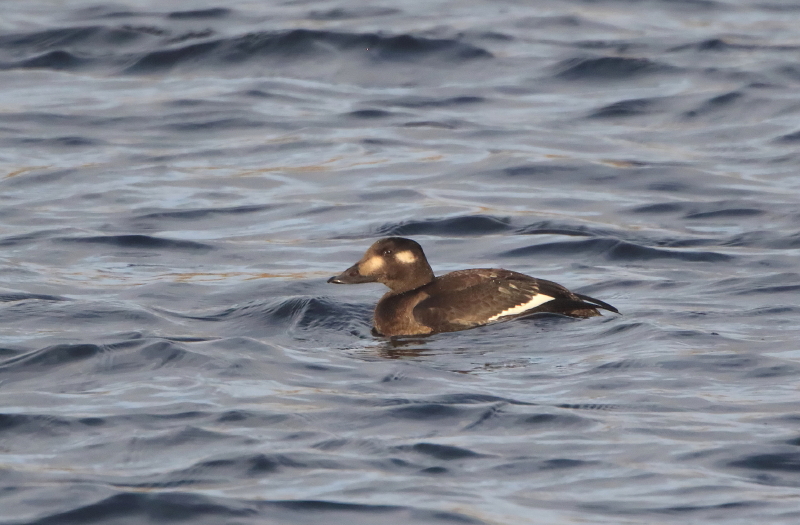
American White-winged Scoter, Loch of Belmont, Unst, 19 October 2017 (Robbie Brookes).
We decided on a cautious approach. It was agreed that further research of both Velvet and White-winged Scoter was needed and better still- closer views in the morning! We had also considered that realistically with ferry times no one would have been able to make it before dusk and after all news was already out on it.
We discussed the bird at length over the evening and put news out that it had been relocated on Loch of Belmont. I also spoke to Dougie who was naturally delighted that it had been relocated and to hear our opinion, very much in agreement with his. Of course this is said after just about every big birds identification but in hindsight we had enough at that stage for a conclusive identification that afternoon, especially with Dougie’s photograph and our field observations as well as supporting phone-scoped images.
With the chance to divulge and reflect confidence continued to grow later in the evening. Interestingly Margaret Pennington (Mike’s wife), pointed out a distinguishing feature that confirmed for certain they were the same bird. It was a small white smudge on the bill bellow its right hand nostril, which was consistent on all images.
Unfortunately Dougie had commitments the following morning so couldn’t be there with me at first light but thankfully it was still present. Mike and Dave arrived soon after and at last with better views there was a much more relaxed vibe as we watched the bird- helped eventually by shared opinion from Paul Harvey and Roger Riddington, who were amongst the first to arrive. They too agreed how subtle it was and how that in different circumstances it might have been overlooked but especially how well Dougie had done initially.
Needless to say it was quite the performer that morning! This was quite the opposite to our first encounter, allowing for really good images to be nailed which 100% confirmed the key features we’d tentatively noted, leaving many to have probably thought- oh yes, surely that was never a Velvet- it’s obviously a White-winged Scoter!!
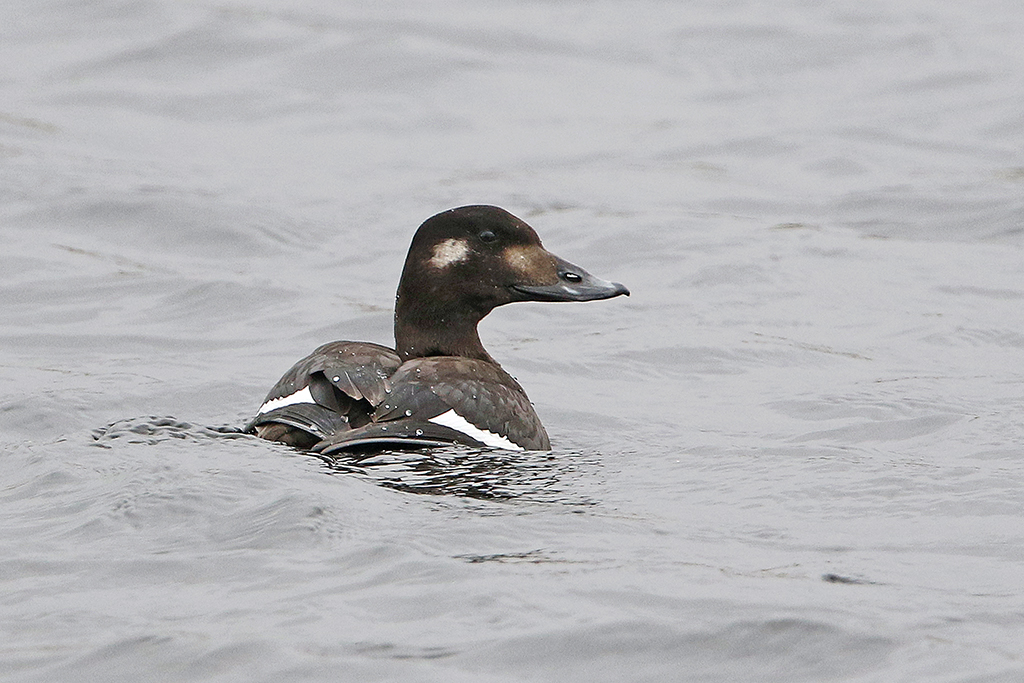
The American White-winged Scoter performed much closer on the morning of 19 October and allowed for excellent images to be taken, documenting the identification beyond all doubt. The distinctive head and bill structure are particularly apparent in this photo (Jim Nicolson).
Recently I contacted Guillermo Rodriguez asking him for comment and if we were right in thinking it was a 1st winter male. He responded:
“Hi Brydon, I fully agree with your diagnosis – the bird is a first-year male White-winged Scoter. Key features for ageing are the neat, homogeneous plumage, and velvet-like feathering around the bill, all certainly pointing towards a juvenile; sexing is slightly more complicated as this bird isn’t particularly short/long billed, but the relatively squared head and bumpy bill, and presence of significantly large white spots on the GC tips, all support sexing as male.
I’m leaving now for a trip so don’t have time to look for the originals – just take the pics you want from my post. And I agree Martin would have been super excited about this bird!
Best,
Guillermo”
Guillermo kindly allowed us to reproduce his composite of first-winter drake American White-winged Scoter images below, alongside an excellent image of a first-winter drake Velvet Scoter, taken in Shropshire in November 2016 by Dave Tromans. We believe these help to illustrate and compare the key features of fusca and deglandi, which were key to the identification of the Unst bird.
- Head shape tends to be more rounded in fusca, whereas deglandi shows a flatter crown and squarer, more Surf Scoter-like, appearance.
- The bill profile in fusca shows a distinct gentle concave profile, scooping downward from forecrown to bill tip, whereas deglandi shows a distinctively convex profile, creating a ‘broken-nosed’ appearance to the upperside. The bill was therefore deeper at the base, appearing to start from higher up on the forehead.
- In fusca the bill feathering stops before the position of the nostril and slopes back towards gape at about 40-degree angle, whereas in deglandi the feathering extends further, reaching below the nostril and forming a 90-degree angle. This is a feature that, although we were quite sure we could see, we found hard to assess at first. Closer views and images made this much easier.
- The nostril size and shape was quite striking; deglandi shows a larger and more oval-shaped nostril which, on the Unst bird, you could see right through, even at a distance, when the bill was in profile. This is in comparison to fusca, where the nostril is smaller and more rounded.
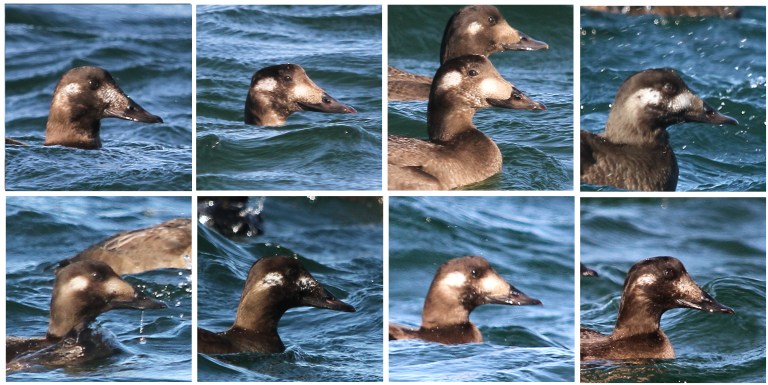
First-winter drake American White-winged Scoters, Crane Beach, Massachusetts, November 2016 (Guillermo Rodriguez).
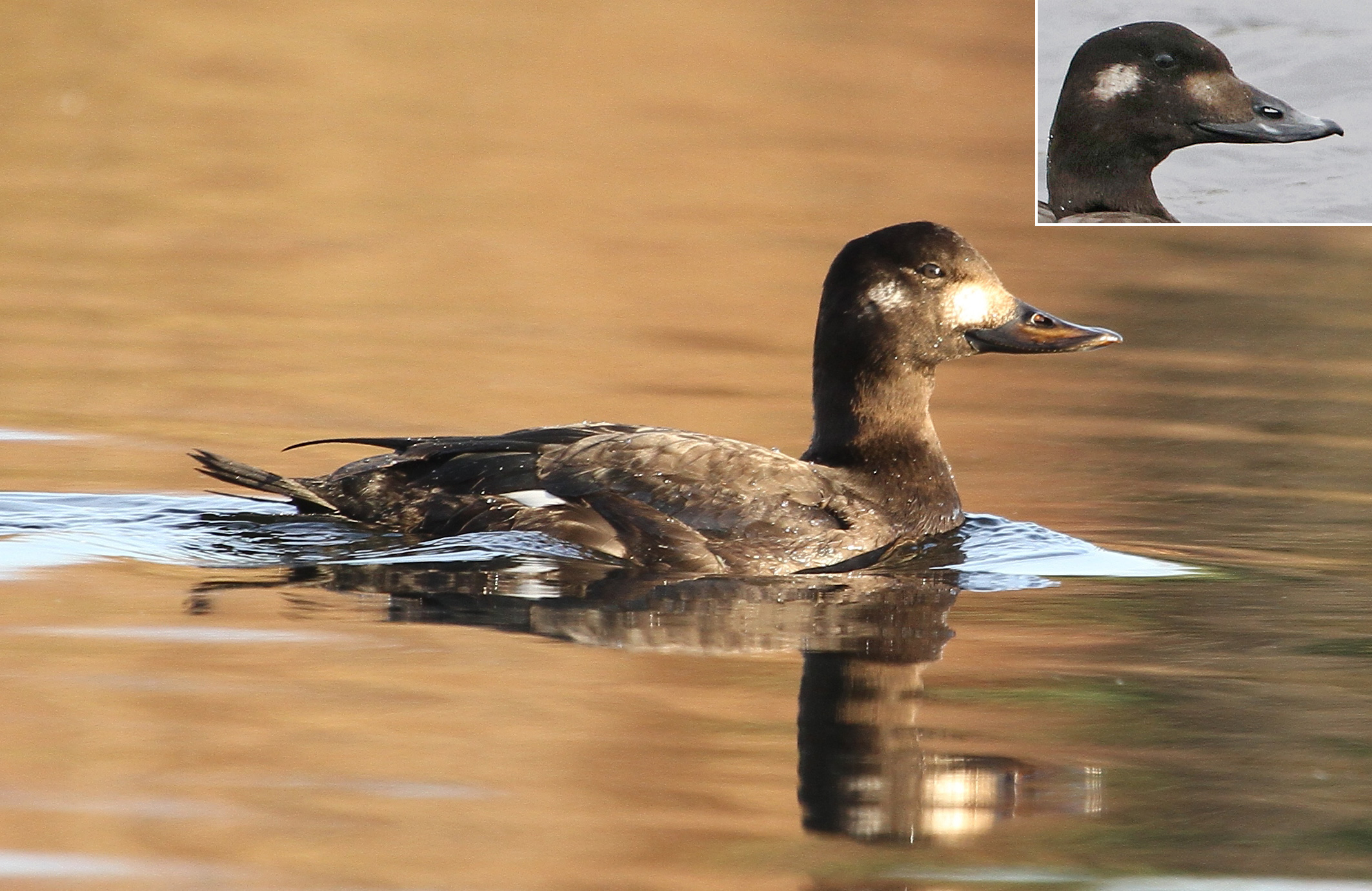
First-winter drake Velvet Scoter, Telford, Shropshire, November 2016 (Dave Tromans) with the Unst American White-winged Scoter for comparison.
Having fantasized about finding White-winged Scoter in Shetland this was a real privilege to have been part of this amazing bird and team effort, heralded by an impressive bit of impulse ID by Dougie. It was rather amusing that barely a week prior to this I found a juvenile Surf Scoter off Unst and on Twitter I joked that; “it was the third species of American duck on Unst in as many weeks- let’s hope the next one has white in its wings!”. Prior to the Surfie the island had already hosted Ring-necked Duck and American Wigeon.
It is perhaps relevant to add that it was later to transpire that this bird had been identified and actually photographed as a Velvet Scoter off Belmont just a few days before.
Hopefully this bird may serve to encourage/remind birders to scrutinise all ages and sexes of all Velvets, when possible. Having not been seen here since the 22nd of October, might this bird turn up again in a scoter flock somewhere in the country or even perhaps Europe?
Permalink
The Siberian Thrush, Baltasound, Unst, September 2017
Posted by Brydon Thomason on Monday 25th September 2017 | Birding in Shetland, Brydon's Shetland Nature Blog
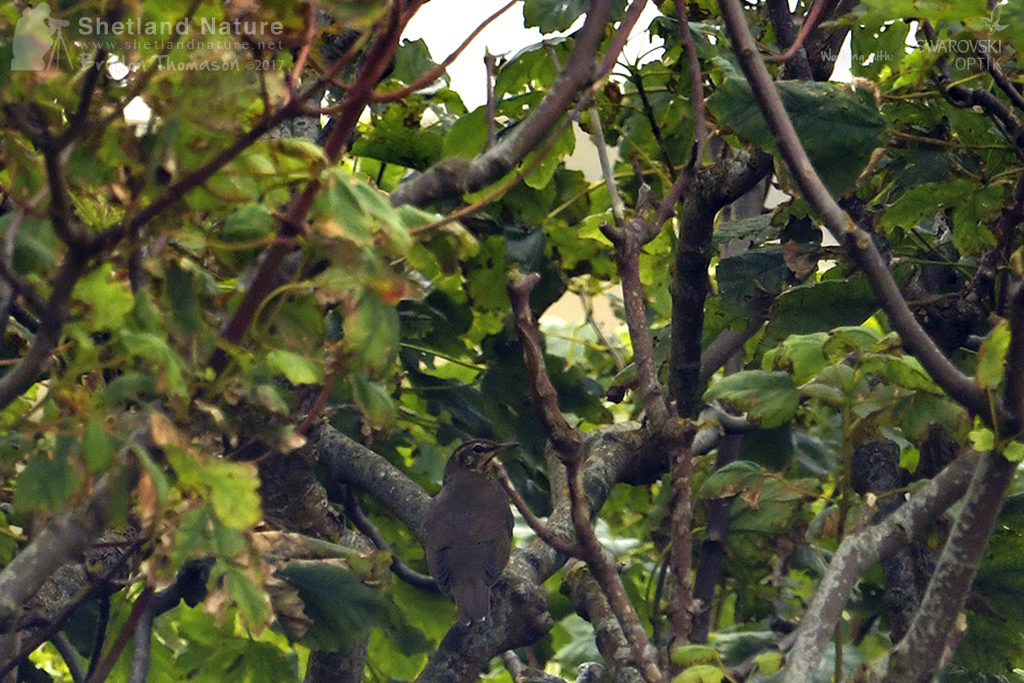
I opened our front room curtains about 07:30am. I’d been slow to get up due to your daughter Nula (15 months) having a restless night’s sleep, resulting in me having none! Two Yellow-browed Warblers chasing each other round the trees however was enough to get me fired- I grabbed my bins and set off for my morning circuit next door in Halligarth. The previous fall of Yellow-brows had been cleared out for a couple of days so clearly there were new arrivals. A third followed by two Willow Warbler and two Garden Warbler was enough to prompt a text to Roger Riddington; ‘New birds in!’, I wrote excitedly.
It was one of those flat calm mornings that just feels ‘rare’, that indescribable autumn atmosphere when you feel a monster rare is possible. The above tally was enough to convince me to carry on for an hour after breakfast and putting bairns to school. 12 Yellow-brows and an hour later, it was time to head home- I had work to do preparing for starting ground works with digger arriving next day.
A quick jaunt across Baltasound to borrow a ‘pinch bar’ (for lifting paving slabs), from Robbie Brookes was in order and on route yet more YBW’s caught my eye along the Ordaal road. Two feisty ‘Sibeie’ sprites were chasing each other round a roadside garden, visible from the car so I stopped and pulled over. Id tried earlier, with zero success to photograph one so I thought I’d try again, with a cheeky of the gardens too!
Standing outside the garden on the roadside, I’d been mimicking their sweet little call and probably doing a pretty poor job, but they’d posed nicely. A few frames in the bag, feeling mildly pleased at my efforts a bird flew up from just a couple of feet from me, out of base of hedge, flying straight across garden away from me and landing in a Sycamore only 30-40ft away.
As is often the way, it could only have been a three or four seconds glimpse as it flew across- as fast as mind could process….distinct white corners to outer tail… flashes in the wing…scaly plumage– WHITES THRUSH?? But no, even in such a short few second view I knew before it even landed it was too small and what it had to be. Even though I’d had my camera raised, shooting the YBW’s, I still dropped it to raise my trusted EL 10 x 42’s and man, I am actually so glad I did! There, superbly scaly and ‘superciliumed’, shadowed in Sycamore canopy was a female SIBERIAN THRUSH!!
When writing up a rarity or if lucky a mega, it’s almost customary to describe the overriding surge of adrenalin coursing through the body but strangely, today I was actually rather ‘together’ and level headed, (although my legs did feel considerably weaker than normal!). I think because it was so strikingly obvious, even on this first two views and I had no doubt as to what it was, maybe helped me keep it together? It’s hard to say.
After perching for just a few seconds, it flew out the garden, calling as it went- a beautiful and quite sweet but fairly clear ‘tssi’, rather like a cross between a Song Thrush and a Hawfinch. The wing bars; white outer tips to tail and underwing patterns combined to create a truly sensational sight. Grabbing for my phone to get news out and the lads around was actually when the reality and shakes started to hit me. Now ok, there had already been five Sibe Thrushes in Shetland and the last was only a year ago (and on Unst!) but still, this is a dream Sibe, still one of the ‘big guns from the east’ and although we allow ourselves to dream of such things, I don’t think I ever imagined finding one!
Perhaps predictably EE network was down so I’d have to leave the site and the bird to use a phone but thought hang on, I’ve just found a Sibe Thrush(!) which I’ve only seen for a few seconds- If I risk leaving it I could risk losing it! I had another couple of flushes and flight views as it flew from garden to garden (barely 50 yards apart), but it was remarkably reluctant to show. Over ten to fifteen minutes I felt it appeared settled between the two gardens so legged it along road to use a landline or Wi-Fi signal.
Within five minutes the lads started to arrive and to my and everyone else’s relief, it showed well enough, even if only tantalising flight views for all that made it. With permission to enter its favoured fly-to garden by Mike Pennington I was able to encourage it out a couple of times. We all agreed it best then to leave her in peace and by before 14:00pm, less than two hours from when it had been found, we had all left. Way too often birders put far too much pressure on birds that are reluctant to show meaning they don’t have time to feed and rest.
To my knowledge everyone arriving over course of afternoon managed to see it too and thankfully everyone even behaved!
The images above actually capture the overall experience quite realistically, especially Rebecca’s back-of-the-camera flight shot. It was surprising just how astonishingly good flight views were, especially through bins. Rebecca and I both mocked our own efforts from photographers perspectives but celebrated them from birding ones!
Having refrained from twitching the Uyeasound bird last year and not having seen any of the previous birds, this little lady was all the more tremendous. I had however seen them in China about ten years ago and so could well remember their frustratingly elusive nature and she certainly lived up to that. Over the course of the two hours I was there (including with everyone one else) I only saw her twice actually perched in sycamores in view- never once in full view on the ground, nor did anyone else as far as I’m aware! Unfortunately there was no sign the following day.
This was the 12th record for Britain and the 6th for Shetland. A big thanks to Brian and Beth Edwards for allowing me to use their phone and to Jim Mouatt for being so accommodating round his and his mothers gardens.
Brydon Thomason
Permalink
Bonxie club site bathing hide
Posted by Brydon Thomason on Wednesday 10th June 2015 | Brydon's Shetland Nature Blog, News
Following on from the success and popularity with photographers in working from my one-man Bonxie bathing hide last year I set up a new larger hide at a much better location. Thanks to Josh Jaggard and the use of a quad and trailer from Duncan, it was not as back breaking a project as it would have been on my own.
The behavioural action at these loch-shore club sites offers some superb opportunities to photograph these superb skuas. Often there can be as many as 50, 60 or even more birds at any one time and often down to 5 to 10m from the hide. It is of course especially good for bathing birds but also there is frequent squabbles break out so plenty of action.
We were really pleased to have BBC Springwatch use both this and the Arctic Skua bathing hides whilst they were filming on Shetland. Wildlife cameraman Raymond Besant was particularly pleased with the footage he shot from it;
We were able to get fantastic footage with the help of Brydon Thomason and Josh Jaggard from Shetland Nature who showed us their best locations. The purpose built hide where Bonxies gather at bathing club site was especially great. I was barely in the hide when they started landing in front of me, just 5 meters away! I’m used to working in small cramped cold hides, so to sit in a chair in a warm dry comfortable hide was a real pleasure. Even more so as a group of 50 Bonxies displayed, washed and fought with each other allowing me all the shots I needed.Raymond Besantwww.raymondbesant.com
Wildlife cameraman
BBC Springwatch presenter
There is arguably nowhere better to photograph a portfolio of these awesome skuas than Unst. The island is home to the third largest colony in the world, set in some of the wildest and most breathtaking backdrops. Hermaness especially offers outstanding opportunities for photographers. Just on the outskirts of the colony on the National Nature Reserve is situated one of Britains most important and impressive seabird cliffs and colonies which provide the Bonxies with the larder they so desperately need for their own circle of life, to feed themselves and their chicks.
Here is an image gallery/profile of this brutal but very beautiful bird, the Bonxie:
Please contact us for tailored photo assignments and tours.
Permalink
Breeding Merlins photo assignment
Posted by Brydon Thomason on Tuesday 29th July 2014 | Brydon's Shetland Nature Blog, Photography
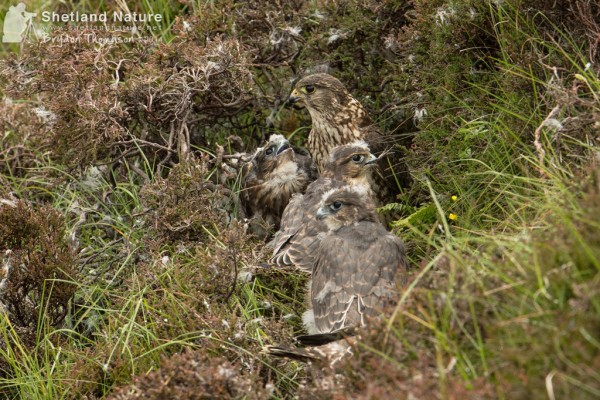
There are perhaps few ‘family groups’ of birds better or more widely recognised than birds of prey. Whether it be an eagle, a buzzard or a falcon these species carry a charisma and iconic status through all cultures of the world. The Merlin is one of Europe’s best known and Britain’s rarest breeding birds of prey. Yet with this iconic status it is a bird few see for more than a few seconds let alone get the chance to photograph. How often do you ever get the chance for example to watch a Merlin through binoculars or telescope? More likely the view you get is of its sleek and petit profile hunting as it darts across the moorland, or maybe a fleeting glimpse as it lifts from a roadside fencepost as you drive by. From a personal perspective this species is a firm favourite and has been so since childhood. It is not just their pure beauty, especially the male, but also their stealth and elusive nature which accredits them with something of an enigmatic appeal.
In the UK they are protected by law and a special schedule 1 license authorised and issued by Scottish Natural Heritage (or English Nature) is imperative to work on them at breeding sites, a privilege I have been authorised for several seasons now.
This season for the first time however (for this species), I applied for an extension on this license so that I could offer this very special assignment to photographers on my one-to-one assignments. To my knowledge I am the only photographer licensed to work with clients on breeding Merlin in Scotland (and most probably the whole of Britain) and so it is a totally unique and exclusive opportunity and one that I am very proud to offer. My sense of pride with this comes not only from the fact that I am trusted with such a responsibility (something that is quite an accolade for a nature photographer in this day and age) but also that I can share such a very special and fascinating insight into bird behaviour in a responsible and controlled way that without this license, would simply not be possible.
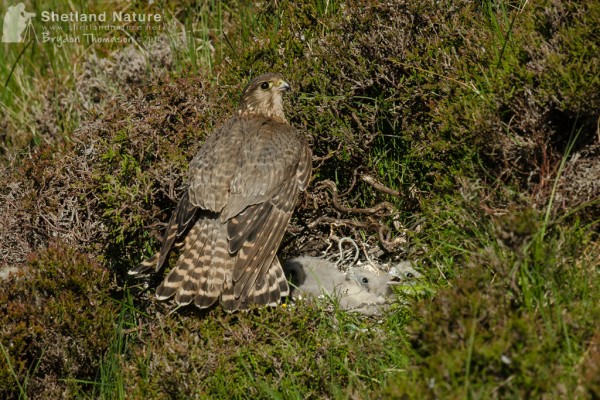
Merlin is one of Shetland’s rarest breeding species, with somewhere in the region of 30 pairs recorded each season. Their preference for remote and often difficult locations is renowned. The pair I worked on in this assignment was no exception. Logistically this site was probably about as challenging as it could possibly be, miles from any main road and over a half an hours walk across open moor and rolling hills. Then was the difficulty of using and erecting a hide on the face of a steep sided valley! From an authenticity angle however it was perfect, an unspoilt wilderness many miles from civilisation and about as secluded as it could be, nothing for miles around but the moorland they would hunt to raise their young.
Stringent caution and care is essential when working on such a species/assignment. With experience and success with them previously I do however feel a quite a level of confidence with them.
It is imperative that work must be done from a hide and the hide must be moved in stages so as they become accepting of it. Not only that but every visit I needed to be walked in and the person with me seen to leave. This season I have to give a huge thanks to Molly Michelin, a photography student on internship with us for her second season, who facilitated these over the project. It’s amazing how simple and yet how effective this technique, (which is used on species all over the world) works.
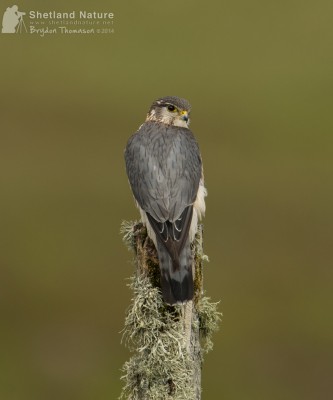
This year I was also able to work with a nice and authentic looking ‘plucking/perch post’ which worked very well, especially for capturing the very handsome male. This was an image I have dreamt of capturing for many years now – I hope that next year I can capture the food pass from him to her – an aspect of their behaviour I have never seen an image of but watched happen several times this season. Unfortunately however this takes place on the hillside, even once only two or three metres from the hide but moving the lens is not an option as they are so sharp any movement is sure to give the game away. My lens needed always to remain static on either the post or the nest. It’s always good to have something to aim for and now I can think of no better an image of these awesome little falcons, role on next summer…
It is heart-warming and extremely gratifying to say that this pair had a very impressive 100% success rate this season, laying five eggs and fledging five young.
For information on booking this assignment in 2015 visit our Merlin Bird Hide Photography page. Please note availability for this specialist one-to-one assignment is limited and solely for serious and experienced nature photographers.
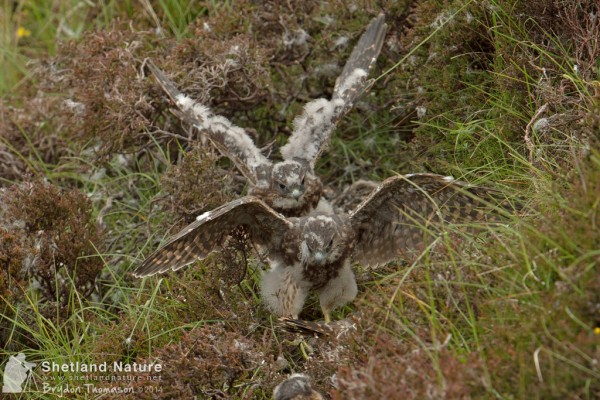
Permalink
Red-throated Diver under license photo assignment
Posted by Brydon Thomason on Friday 25th July 2014 | Brydon's Shetland Nature Blog, Photography
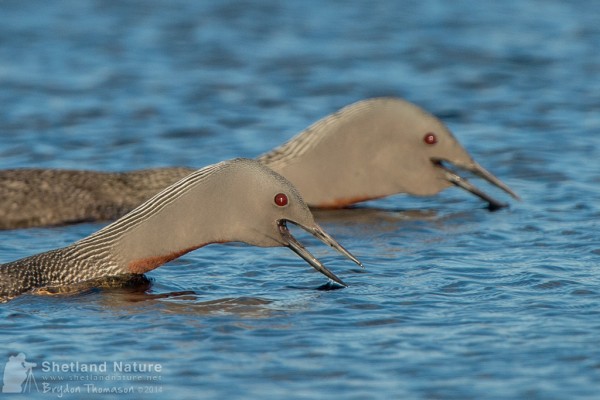
Shetland is renowned for harbouring many nationally rare and essentially northern breeding species of birds and for many, such as the elegant and evocative Red-throated Diver, it is the UK stronghold. Shetlands hundred’s of scattered lochens and moorland pools harbours somewhere up and around 400 breeding pairs of this stunningly beautiful and birds which is the highest density of the species in the British Isles. It is both their rare breeding status and their sensitivity to disturbance that ensures they are protected by law and listed as a Schedule 1 species by Scottish Natural Heritage.
I have been very fortunate to have spent several summers now working under such a license and lest year for the first time I applied for my license to be extended so that I could offer this fascinating, exhilarating and exclusive experience to photographers on my one-to-one assignments. Although there was rising interest from clients it wasn’t until I had several summers experience of working on these wonderful birds that I felt I was ready to share this truly enchanting and exciting experience and assignment. Thankfully my well established relationship with licensing authorities ensured I was trusted with this quite serious responsibility.
To my knowledge I was the first photographer to be issued with a license to work in this way with Red-throats and so this year’s guests under my strict guidance have enjoyed a privileged and unique experience indeed.
This kind of assignment simply must be done from a hide and it is of course imperative that this is so. This season I set up my hide well ahead of breeding commencing so I could hope to capture and study their courtship and display, which although I was only lucky enough to see on a couple of occasions I did at last nail at least some images of this fantastic behaviour. I also built my diver hide to have a low angle shooting hatch, which took me down to just above water level to get a nice low lying perspective on the birds, particularly on take off.
This is a bird that has fascinated me all my ‘birding’ life. It is a bird that where ever you are in Shetland throughout the summer months you will not be far away from, whether it be a bird flying overhead on route to the sea, a pair on a beautiful calm freshwater loch or maybe the distant haunting yet enchanting calls from a far. So highly regarded are they locally that they are even said to forecast the weather for us in that their calls and or flight direction could indicate rain coming (hence the name I guess!). But let’s be honest, in the Shetland we know and love the prediction of rainfall is not exactly a risky one to make! It is an endearing thought though however that they have been around long enough and have been so highly regarded as to have this association throughout the isles.
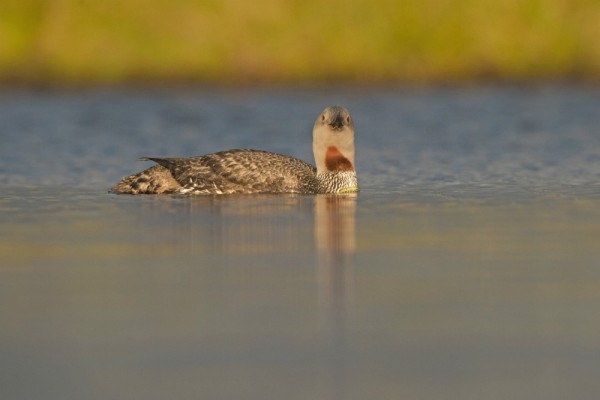
Views of Rain geese to most are often little more than a dark silhouette in the distance but close observation reveals the most exquisite detail, from the dapper pin stripe of the nape to the ruby red eye and of course the deep and almost burgundy red of their throat patch. All a fore mentioned are highly desirable attributes for any bird or wildlife photographer. To work on a pair on a breeding loch and enjoy behavioural aspect of their breeding few ever see let alone photograph and on a remote Shetland moorland is simply a dream assignment to most.
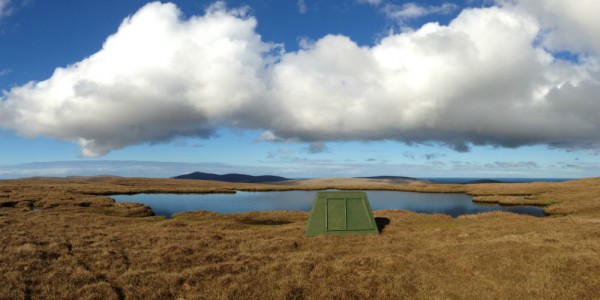
Read more about our Red-throated Diver photo assignment opportunities
Permalink
Breeding Ravens photo assignment
Posted by Brydon Thomason on Friday 25th July 2014 | Brydon's Shetland Nature Blog, Photography
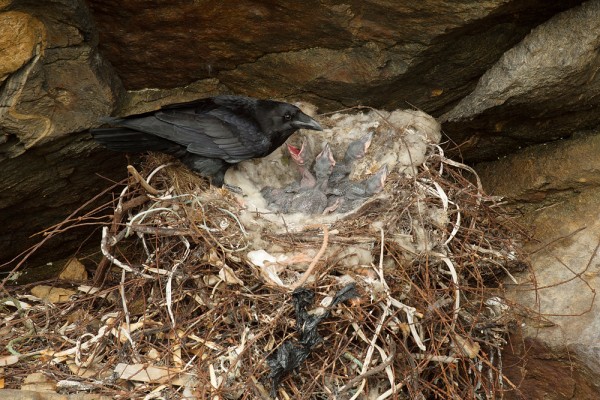
The bird family group corvidae or more commonly known in English as corvid’s are truly fascinating and much admired. Generally speaking, crow’s in particular carry something of a symbolic status through the histories of many and in fact probably most cultures. There is something very powerful, even mythical about their demeanour and this is especially so for the Raven. When researching and writing an article on them last year I came upon a fantastic piece of writing by Jessie M. E. Saxby in 1893, which includes notes by W. A. Clouston, which I felt summed them up beautifully:
“Those who have studied the Raven can well understand how the Sea-kings of the North took him for their emblem in preference to all other creatures”.
“The lordly bird, dwelling aloof in some inaccessible precipice, floating silently on black wings over the heads of more common creatures, dropping with stern, implacable ferocity on his prey, calmly croaking of doom when the sun shines, rejoicing in a storm, haunting the footsteps of death, feasting on the dead: well might he be taken as the symbol and companion of Sea-rovers, whose sable flag was the terror of nations, whose Raven ensign seldom drooped before the banner of a foe. The Raven was held sacred by the Vikings. When setting out on marauding expeditions, the Raven was, with many ceremonies, let loose, and where he led the Norsemen followed, believing that their Bird of Omen would lead to some scene of triumph”
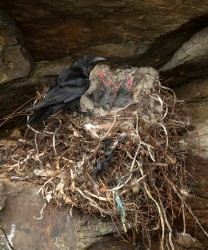
It is a combination of this iconic status, their sharp witted nature and their undeniable beauty that make them such an appealing subject for a photo assignment. Here in Shetland we are fortunate to have a fairly good population breeding, estimated at over 200 pairs just over a decade ago. Each year I see many pairs nesting at various sites around Shetland and have had my eye on several nest sites which are suitable for hide work and this spring worked on a cliff-nesting pair here on Unst.
Nest sites/territories range from the high sea cliffs, inland quarries, steep-sided and heathery inland gullies and even pine tree plantations so a good deal of thought and planning needs to go into choosing a suitable site and this site is ideal. Quite remote (but within a reasonable walking distance) on cliff face about 20m high with an opposite facing cliff where my little self-built one man wigwam hide sitting facing it around 30 to 40m across from it. As is the case for nearly all my hide work, I use my own purpose/self-built constructions to work from and at a site like this especially sat on the edge of a Shetland cliff top is no place for a pop-up built for a woodland!
This kind of work takes weeks of work before you ever even look through your lens. Thankfully I already had a hide built (my one-man wigwam) which was ideal for the task but even then I had to get it to the site, which without ‘blood, sweat and tears’, (well, almost all three of those!) and of course quad and trailer-would not have been possible. Even the logistics of getting the hide to the nearest ‘end of the road’ and then the quad there too, takes time and then there is the graft of rumbling the hide on and off. As is the case for any hide work, especially nest site work, I start off at least two to three times further away from the nest as I plan to end up positioning the hide. Then I move it closer in stages, maybe a week between. This allows time for the birds to accept the wooden box and to date; this has always worked with several different species now.
I personally find Ravens, or ‘corbie’s’ as we call them here, extremely fascinating and exciting and also enjoy working on them at close quarters, from a hide during winter. That was indeed an exciting assignment to watch their behaviour when flocking in to feed on the carcass of dead sheep. But in many ways this was just the beginning of the story I wanted to tell. What I love to do is tell a story, a ‘circle of life’ of each of Shetlands most iconic species through a portfolio of images of their behaviour.
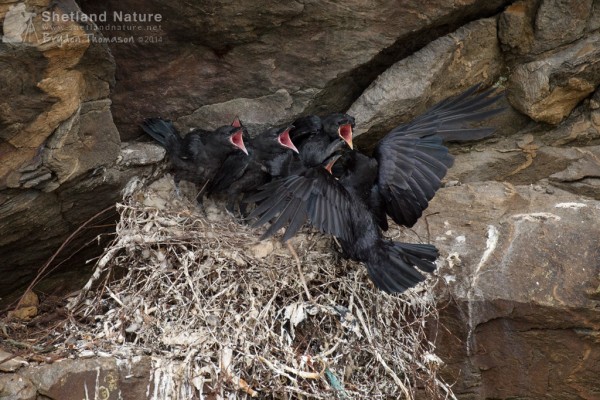
Without a hide no right minded Raven would come back and land at their nest. ‘Walk-ins’ are essential to try to trick nesting birds into thinking that a human has just walked to the hide and then walked away again. I have someone walk to the hide with me, in I go and then they leave. I have often heard it said that corvid’s can actually count so therefore can’t be tricked in this way. Thankfully, this pair seems to have no better grasp on maths than I do and so the walk-in and walk-out method worked a treat.
It really is fascinating to watch how such a sharp witted, notoriously unforgiving predator and a scavenger as the Raven can show such an attentive and sensitive side. I find it such a thrill to watch and photograph such intimate behaviour as the parents tend to their chicks. This behaviour something that is simply not possible without working from a hide and so yes, all that hours, days and even weeks of work and planning are worth every pain staking moment!
View Raven photography opportunities
Permalink



